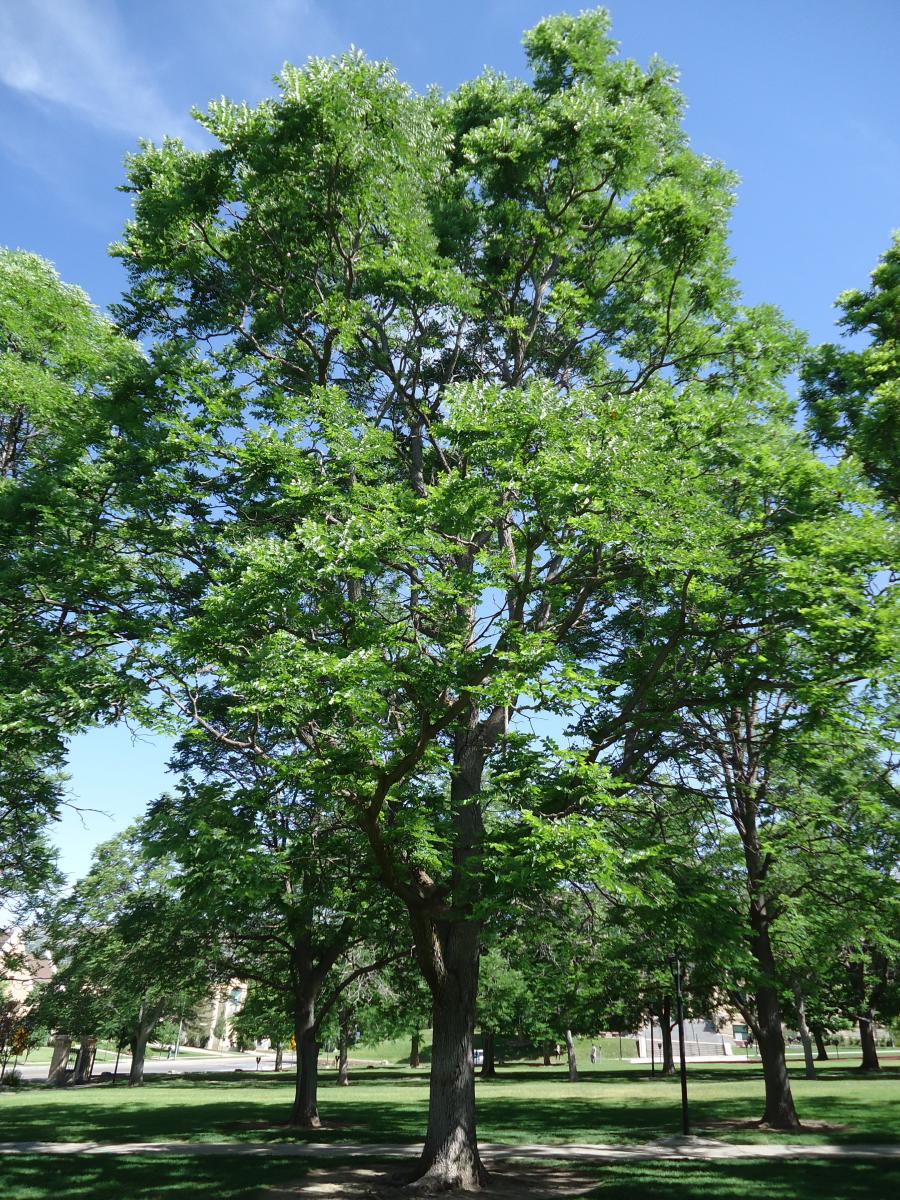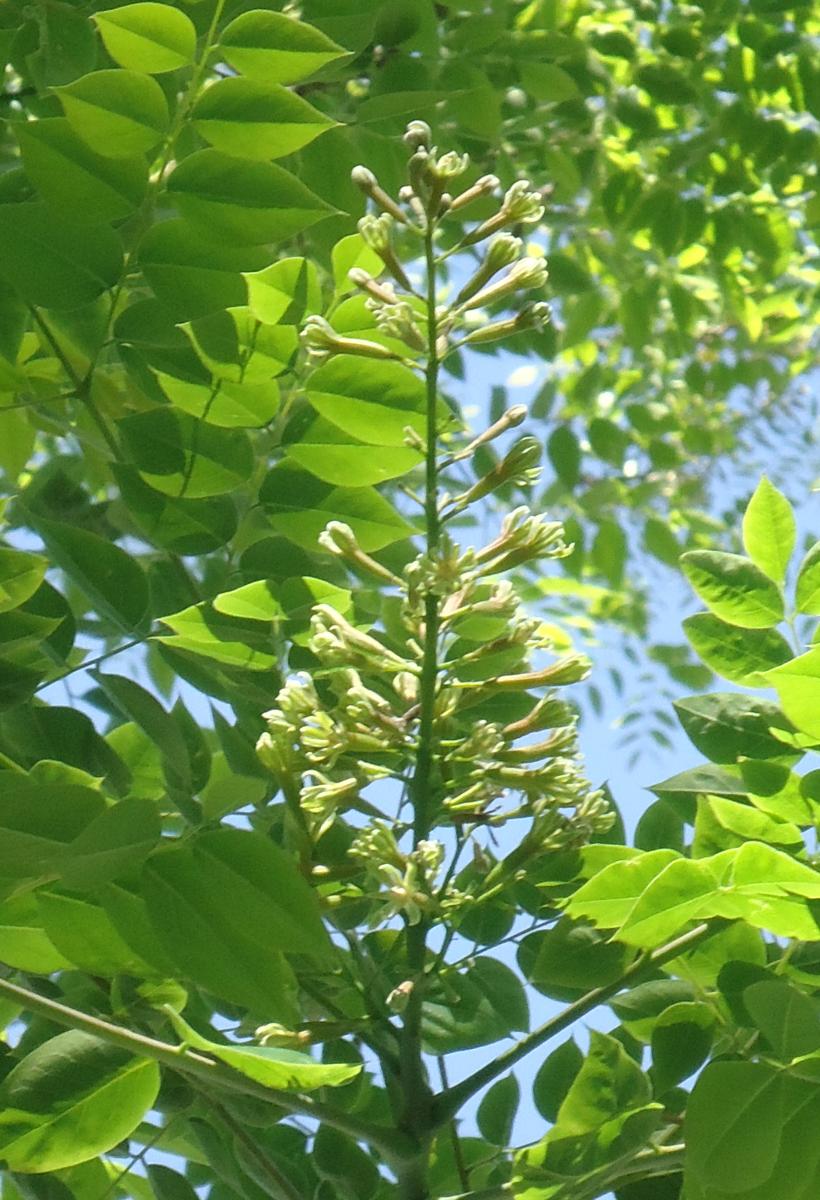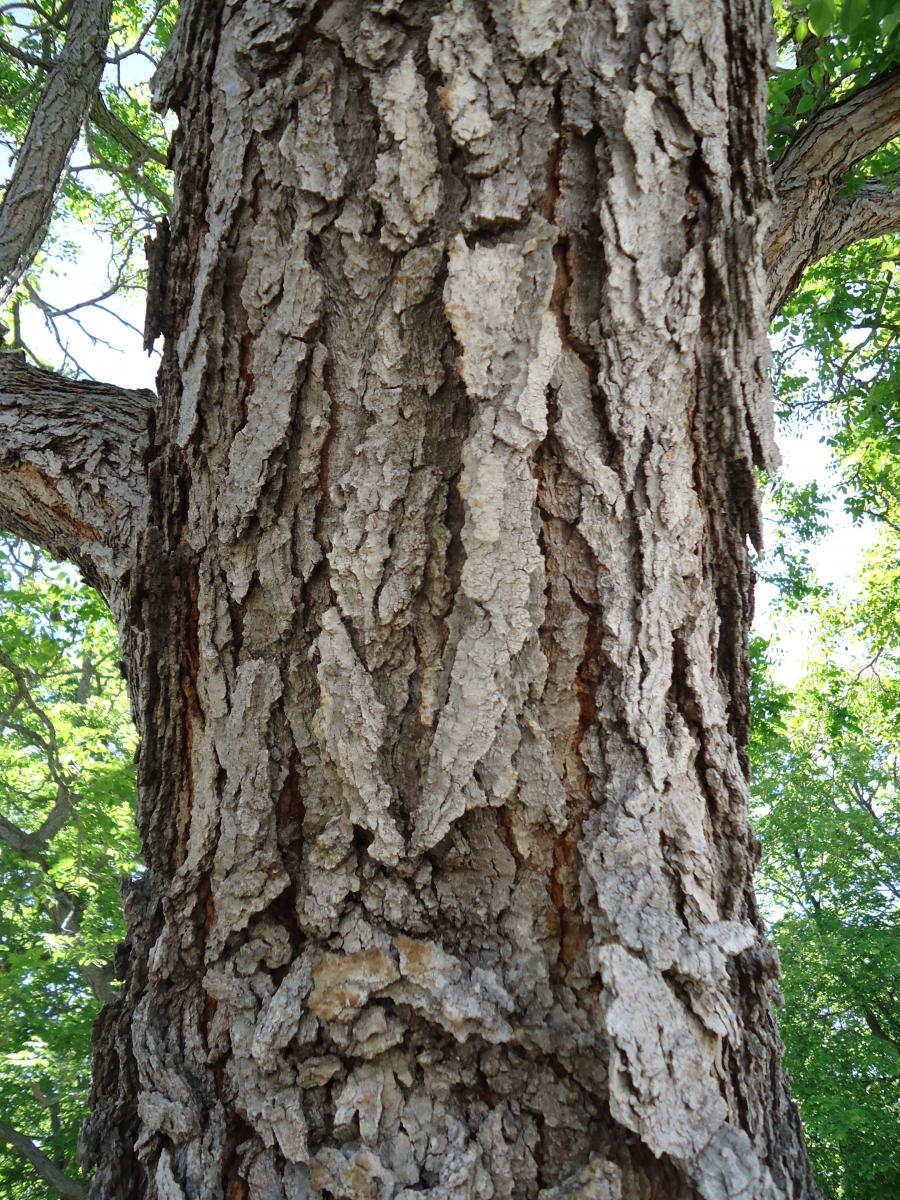Kentucky Coffeetree






Gymnocladus dioicus
Leaves: Deciduous. Leaflets grow on many leaf stems attached to one single leaf stem which is then attached to the branch (bipinnately compound). The entire leaf spreads 2 to 3 feet long and 2 feet wide. 20 to 40 leaflets are 1½ to 2 inches long, oval shaped and pointed at the tip. Leaves emerge late in the spring and are slightly pink but turn to dark green in summer, sometimes blue-green. Fall color is yellow.
Bark/Twigs: Dark brown bark is characteristically rough with deep curving scale-like ridges. Very unique and visually interesting to provide year round interest.
Flowers/Fruit: Greenish white flowers bloom in early summer (late May to early June). Dioecious - species has both male and female trees. Female trees have fragrant flowers in hanging clusters 8 to 12 inches long (like a bunch of grapes). Male trees have clusters about ⅓ as long. Female trees bear a large legume fruit 4 to 6 inches long, 1 to 2 inches wide. The leathery red-brown pods are full of brown, thick, penny-sized seeds. Seeds are poisonous unless cooked correctly. Pods persist throughout the winter and drop in the spring.
Mature size and shape: Large. 60 to 75 feet high x 40 to 50 feet wide. Upright and somewhat oval shape. Form tends to be unique from tree to tree. Somewhat narrow crown.
General information/special features: Plant in full sun. Adaptable to a wide variety of soil conditions and does well in Utah's arid climate. Moist, rich soil is best. Tolerant of drought and city conditions. Early Midwestern settlers used the seeds and pods (which are poisonous in large quantities) as a substitute for real coffee.
Landscape use and maintenance: Good unique shade tree with year-round interest. It has a coarse texture in winter with an interesting branching pattern. Slow to medium growing rate. High maintenance. Prune in winter or early spring.
USDA Hardiness Zone: 3 to 8
Family/Origin: Fabaceae – Legume. A fairly large tree native to most of the central-eastern U.S. Never very common naturally.
Campus Use: Somewhat common. Can be found on the west half of President's Circle.
